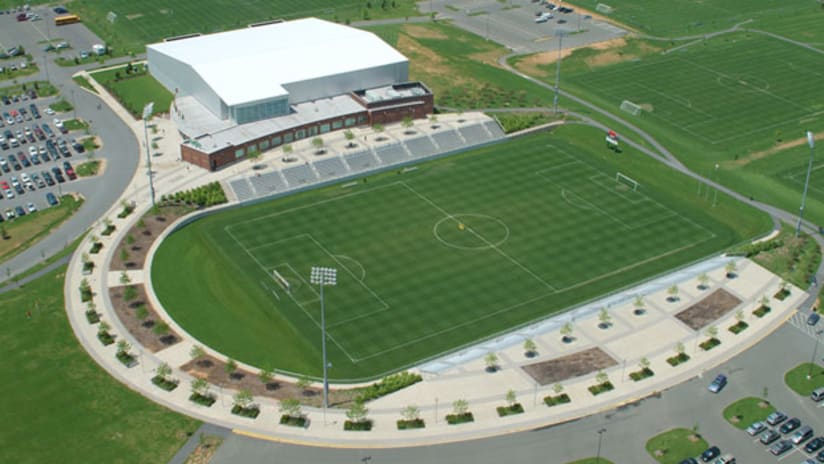This is a companion piece to feature writer Charlie Boehm’s long-form story: "How artificial turf could change the future of soccer in North America."
Think the rise of artificial turf is inevitable?
Jerad Minnick and his colleagues would like a word with you.
“There's a lot of people that think synthetic is the only option,” the veteran groundskeeper told MLSsoccer.com this week in a discussion about the rise of artificial turf in North American soccer. “They don't even know that there are trained professionals out there that know how to maintain [grass] fields at a high level."
Formerly the director of sports field operations for Sporting Kansas City, Minnick is now the sports turf manager at the Maryland SoccerPlex in Boyds, Md. (above), a sprawling soccer venue in Washington, D.C.'s northwest suburbs. It’s where thousands of youth and adult games take place each year on some two dozen natural-grass fields and three turf fields, as well as a small stadium which hosts the NWSL's Washington Spirit and most of D.C. United's US Open Cup matches.
MLS turf timeline: A look at some of the most memorable moments on artificial grass
He's a prominent member of a small but devoted community of expert groundskeepers – or “turfgrass managers,” to use a more modern term – who believe that top-quality grass playing fields can thrive in many of the places turf now holds sway, if clubs, associations and other managing entities would only set aside some outdated ideas about what's possible.
“It's all on us in the grass industry,” said Minnick. “Synthetic turf's marketing machine has capitalized on our laziness and old-school response that 'grass fields can't take more [use].'
“Then you consider that our stadium field has hosted 15 youth matches, seven pro matches, a rugby match, three pro trainings and seven days of youth clinics in the last six weeks. And it doesn't even look played on.”
Emphasizing “soil aeration, nutrient management and traffic management,” Minnick and others in his field are using a wide range of tools – from million-dollar grow lights and grass breeds genetically engineered to be disease- and cold weather-resistant to something as basic as sand – to make grass fields lusher, tougher and longer-lasting.
Minnick praises the progressive work of MLS groundskeepers – “They're doing things right” – but feels that North America in general is lagging well behind Europe in this department.
“In the US we're way behind on these technologies,” he explained. “There's over 120 stadiums in the world that utilize [grow] lights. There's only four in the United States. And we like to be the best at everything!”
Over the years Minnick has built relationships with the turf managers at top European clubs like Real Madrid and Manchester United and visited their facilities to learn how they maintain excellent grass pitches despite many challenges. He's come away amazed at the levels of innovation and expertise across the Atlantic.
US national team's Jurgen Klinsmann: "Playing the game on turf is no problem at all"
“MLS stadiums are setting such a high standard for quality in the USA, especially with all the traffic they sustain: Concerts, high school and college football, lacrosse, rugby, then lots more soccer than just MLS,” he said. “It's really great stuff how the people in MLS are producing fantastic fields in challenging climates early and late in the year.
“At the same time, the Europeans have been doing some things – it's mind-blowing how far ahead of us they are when it comes to creativity and different methods to make grass fields better.”
Heavy use, high rain, cold winters, poor access to sunlight, even (especially) domes overhead – sports facilities across this continent cite myriad reasons for their reliance on turf. Some are debatable, others seem obvious.
Minnick and his colleagues refuse to accept the excuses and limitations, believing that quality sports grass can be grown literally anywhere, and at equal or less expense than synthetic turf.
Even indoors.
“Oh my goodness, yes. That's the next frontier,” said Minnick, who thinks this could be accomplished on a “sustainable model” with an initial investment of under $2 million. “It's funny to say this, but it will be easier than it will be outside, because you can control all your environmental factors – light, humidity, temperature, water. It will be easier.
“You think about Qatar and World Cup 2022, I think that will be the first time that we see grass grown completely inside – if somebody in Europe doesn't do it before them. These big clubs in Europe will probably do it before that.”










